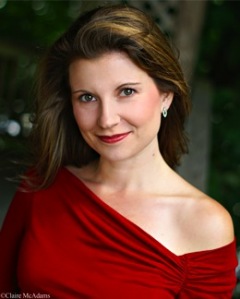Miami Mozarteum offers a diverting program of songs and arias
Although a preeminent composer of opera, Mozart’s songs and chamber ensemble works are creations of equally compelling craftsmanship. A program spotlighting the ties between these genres characterized the Miami Mozarteum concert Monday evening at the Trinity Episcopal Cathedral.
Particularly in the first half of the concert, the diversity of repertoire served to demonstrate the capabilities of the individual vocalists as well as the instrumentalists. The bookending Allegro and Andante movements of the Divertimento in D, K. 136 were exceptionally well done, drawing out the light and delicate textures with a high degree of nuance made all the more striking by the acoustics of the cathedral.
Eliciting a wide range of dynamic contrast, the performers offered moments of both quietly intimate clarity and surging vivacity. This was certainly the case with the wildly jubilant Sonata for Flute, K. 14 composed by the young Mozart and performed by Nadine Asin and Marina Radiushina. The flashy dialogues in the opening Allegro were executed by the duo with great clarity, a testament to the their ability to adjust to a different sound environment.
All of the vocalists had impeccable stage presence, presenting the scenarios of their respective arias with all the necessary dramatic flair.
Especially in the Don Giovanni duet “La ci darem la mano,” mezzo-soprano Amanda Crider and baritone Graham Fandrei presented a brief operatic scene replete with demonstrative action and enthusiasm. Esther Jane Hardenbergh’s performance of two Mozart lieder, Ridente la calma (May a Happy Calm Rise) and Abendempfindung (Evening Sensations) was yet another showcase of vocal artistry. Coming from two different periods of the composer’s creative life, the contrasting themes—a reflection on youthful happiness and a melancholic evening reverie—-were given essential varied changes in color and timbre.
The second portion of the concert prominently featured music director Scott Flavin’s own arrangements of the arias for the Mozarteum’s chamber ensemble featuring solo instruments as well as vocalists.
Flavin’s scoring created a consort more directly involved than in a purely accompanimental function. With the arias “Voi che sapete” from Le nozze di Figaro and “Fin ch’han dal vino” from Don Giovanni, flute and clarinet lines occasionally supplemented the given aria. The instrumental interplay with the vocalist took on an important dramatic function in Graham Fandrei’s performance of Papageno’s suicide aria as the flute sounded alone with him as he counted down his final moments, hoping for someone to dissuade him.
The scoring was full and engagingly written to allow the ensemble to both support and interact with the vocalists, enriching the entire discourse for the audience. Ending the concert with the trio “Soave sia il vento” from Cosi fan tutte, listeners witnessed Mozart’s deft ability to sharply define each character’s voice part within a group setting, complemented by the Miami Mozarteum’s chamber ensemble.
Michael Palmese is a graduate student currently pursuing a masters degree in musicology at the University of Miami.
Posted in Performances
Leave a Comment
Tue Mar 11, 2014
at 3:04 pm
No Comments
